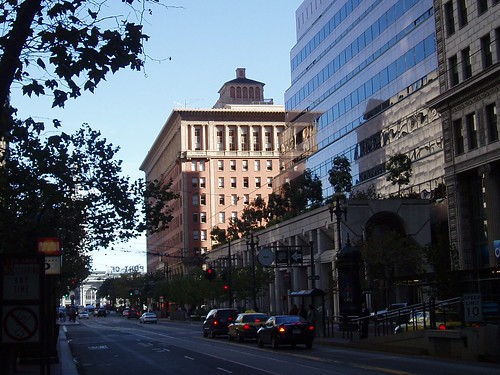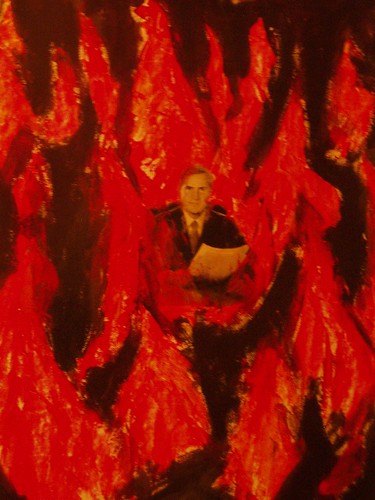To get the news from Poems
but men have died miserably everyday
for lack
of what is found there
In my more despairingly calvinist moments the thought of people devoting their lives to origami would strike me as another sign of the wasteful excess of modern consumer culture--for g-d's sake don't people who buy those little origami kits know that someone is starving somewhere? But face to face with the astonishing creations, and watching a short film on some of the artists, I became enraptured with our human ability to fashion beauty and to explore space and nature even in the face of the chaos and fear of our everyday lives. The artists ranged from a guy who had two degrees from cal tech and had worked for NASA and abandoned everything to "fold paper" to a wonderful woman who had "dedicated her life to the children" and to "peace" and used origami as a way of bringing Palestinian and Israeli children together. The exhibit contained pieces, such as a kraken swallowing a three masted schooner, folded and then molded by dampening the paper, from a single six foot sheet of paper. The artist's folding design, a highly mathematical blueprint of the creases and folds, lay next to it. Another was a full sized pangolin folded from another single sheet of paper, perfect in every scale. Still another was a single piece of folded silk, carefully folded into a tessalated moorish design. Backlit the warp and woof constitute the pattern.
One of the artists spoke about how, to his eye, everything is folds--from the mountains and hills around us, to the creases of our own skin. A baby, to his mind, unfolds. Everything can be seen as a surface, or set of surfaces.
Which takes me to the next exhibit. Maori body tatoos were banned by the white colonial authorities from (?) 1840-1962 (?) and preserved by only a few old women who, presumably, no one bothered to arrest. After 1962 criminal gangs began to use them but eventually through a process of self rediscovery and indigneous pride the elders of the community and the leaders of the various clans and families recaptured control and have begun the process of turning facial and body tatoos (moko) back into a serious form of self discipline and ethnic pride. It was an intimate and powerful exhibit since the participants were asked not just to allow their photographs to be taken but also to put up a statement about what their moko meant to them. They agreed on condition that the exhibit would serve as a kind of public prayer for the return of the various severed and mummified Maori heads which were taken from New Zealand and collected in museums around the world.
Putting on moko is a highly complex act--one part rebellion, one part self assertion in a hostile world, one part zen like discipline. Many of the subjects talked about assuming moko as (to their mind) an out of control young man in a gang but later learning to use it as a form of bodily and spiritual self discipline. Many spoke of how, by externalizing their Maori heritage onto their skin, they found themselves no longer able to move invisibly or humbly through their interactions with other Maori or non Maori. They said that their moko had given them an inner discipline because it drew attention to them and to their behavior. Sometimes young people took moko, with their elders' approval. And in some cases very old people were taking moko, in order to support the choices made by those younger than them. there is a whole Rasta community of Maori whose statements were simply pieces of the old or new testament.
Both these forms of art created new communities for the people participating in them. Both are art forms of the skin, or surface. Both were, for their participants, almost a form of meditation or communication. To go from one exhibit to the other was to grasp, for a second, how important art is to human existence. Its not something that we can or should forgo in pursuit of "higher" or even more "necessary" political goals. Its something we can't do without, even if we do it on the edge of a precipice.
aimai


















